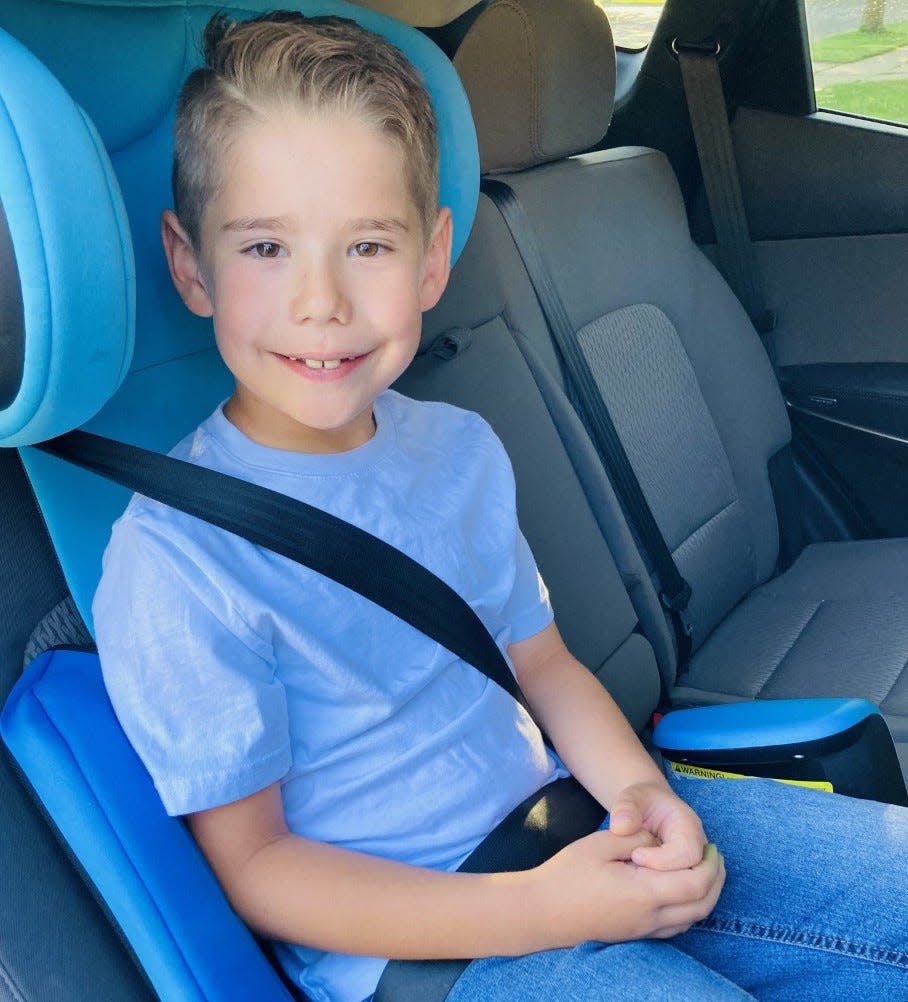Distracted driving remains a hard habit to break in South Dakota
South Dakota lawmaker Doug Barthel, a former police chief in Sioux Falls, tried to make state roadways safer from distracted drivers by spearheading passage of a law in 2020 to restrict cell phone use behind the wheel.
The South Dakota law allows cell phone use in a vehicle, but only for phone calls or to look up a phone number, and allows drivers to hold the phone to their ear. The law made it illegal to use a phone for texting, taking photos, watching videos or accessing the internet except in an emergency, and made the infraction a primary offense for which officers can pull over and ticket a driver.

Barthel hopes the law has prevented distracted driving in some cases, but he acknowledges that drivers in South Dakota and across the country continue to engage in risky behaviors behind the wheel that lead to thousands of deaths and injuries each year.
“I just hope there’s some people who got the message and it’s having an impact on them, but to be honest, the majority of people probably ignore the law and still use their phone in the car how and when they want to,” said Barthel, R-Sioux Falls.
More:As holidays approach, cellphones and speeding remain major roadway risks in South Dakota
In South Dakota, 250 people were killed or injured in car accidents attributed to distracted driving in 2021, according to the state Department of Public Safety, though experts acknowledge the number is probably much higher due to difficulty in proving distracted driving after an accident has taken place.
Distracted driving was listed as a contributing cause of accidents in South Dakota in 2020 at a higher rate than speeding, disregarding a traffic signal, improper passing, over-correcting, and swerving to avoid an object, according to state crash data. Among teen drivers, 58% of those involved in an accident were distracted at the time of the crash, the state DPS said.

Across the U.S., fatal crashes involving a distracted driver rose by 12% from 2019 to 2020, the last year for which data is available. Among all highway deaths that year, distracted drivers were known to be involved in 8% of fatal wrecks (3,143 people killed) and in 14% of injury accidents (324,600 people injured). About 600 pedestrians were also killed by distracted drivers that year, according to the National Highway Traffic Safety Administration.
Texting while driving is significantly more dangerous that talking and makes a crash 23 times more likely, experts say. With the time needed to read or send a text estimated at five seconds, a driver at 55 mph would be distracted for 405 feet of vehicle travel, more than a football field. At 80 mph, the interstate speed limit in much of South Dakota, the texting driver would be distracted for 585 feet, nearly the length of two football fields.
South Dakota Highway Patrol officers have increased enforcement of distracted diving laws in recent years, according to state data.
More:South Dakota Attorney General Jason Ravnsborg settles wrongful death suit with widow of crash victim
From 2015 through 2022, state troopers have issued a total of 1,218 citations or warnings to drivers for distracted driving infractions (527 citations and 691 warnings.) Yet the data show that citations and warnings have climbed in the past two years compared to the six years prior, with 46% of the warnings and citations coming in just the past two years.
The Watertown Police Department has used targeted social media campaigns to let people know that officers will be out looking for distracted drivers on certain dates and times, much like sobriety checkpoints. During a recent campaign, they focused on issuing warnings the first week and then started writing tickets the following week. The fine is $122.50.
“Word spreads fast, and it’s a bit of a deterrent,” said Capt. Steve Rehorst, a 20-year veteran of the Watertown department. “If we can change people’s behavior for one day or one weekend, maybe that change carries over beyond that point.”

The challenge for patrol officers is that catching a driver in the act of texting or checking social media on a phone is difficult.
“When you’re in a black-and-white patrol car that’s clearly marked, they’ll put their phone down because they can see you coming,” said Derek Mann, a former highway patrol officer who is now a crash investigator for the Rapid City Police Department.
Mann anticipates that South Dakota will at some point move toward banning hand-held devices for all drivers anytime they are behind the wheel, as 24 other states have done, according to the National Conference of State Legislators (Minnesota is the only neighboring state with a hands-free cell phone law).
He also pointed to cell phone blocking apps that prevent drivers from making or accepting calls, texting, or accessing the internet while behind the wheel.
Barthel said cell phones have become so ubiquitous that it may be impossible to stop people from using them while driving.

“They believe they have good reaction time, and they’ve never had an issue,” he said, “but they’re just playing with fire if they’ve got their head down looking at their phone while driving. Heaven forbid, they will drift into your lane and hit you head on.”
Barthel said he was long aware of the dangers of distracted driving, but became fully engaged in pushing the phone law after hearing from the father of Jacob William Dahl, a 19-year-old man from Castlewood who died in 2014 after crashing into the back of a stopped truck. Dahl was looking at his phone and had his cruise control set while driving. He apparently never looked up or braked before striking the truck. The impact killed him instantly.
Barthel did not run for re-election and is leaving the Legislature, and he’s unsure if any other lawmaker will try to bring forward a bill that he believes could have the greatest safety impact — a stricter distracted-driving law that would allow only hands-free use of phones.
Several efforts are underway in South Dakota to alert residents to the dangers of distracted driving.
More:Ban on using cell phones while driving among new laws in South Dakota beginning July 1
The Safety Village of South Dakota recently received a small grant from State Farm insurance to develop a program in schools to educate young drivers on overall safety but also to stop distracted driving.
The state DPS recently commissioned a sculpture now on display in the Empire Mall in Sioux Falls that depicts a large globe consisting of 250 cell phones, each tucked within a coffin. The sculpture, which will later be placed in public places across the state, is meant to highlight the 250 people injured or killed in distracted driving crashes in 2021.

The group South Dakota EMS for Children also received federal grant money recently to embark on a campaign called “Buckle Up/Phone Down,” said Emily Pogue, program coordinator for the group.
The group that supports safe treatment and care of children has created a web page and plans to develop an app that reminds people to be safe behind the wheel. During the six-month program, the group wants people to take a pledge to remain safe while driving, including wearing a seat belt.
In 2020, according to NHSTA, the overall U.S. seat belt use rate was 90.3%, while it was only 68.3% in South Dakota. In South Dakota, seat belt use is required, but failure to wear a seat belt remains a secondary traffic offense.
The EMS group also notes on its website that more than one in 10 fatal accidents in Lincoln and Minnehaha counties is related to distracted driving.
Pogue's support of safe driving habits has rubbed off on her 8-year-old son, Keaton, who sometimes reminds her to wear her seat belt or signal before turning if she gets complacent.
“In Sioux Falls, we’re all about neighbor helping neighbor, so it’s important to remember this isn’t just about safety for drivers, but also for passengers and pedestrians,” she said.
— This article was produced by South Dakota News Watch, a non-profit journalism organization located online at SDNewsWatch.org.
This article originally appeared on Sioux Falls Argus Leader: Distracted driving remains a hard habit to break in South Dakota

